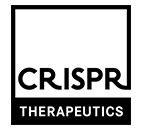预约演示
更新于:2025-05-07
HLA-E
更新于:2025-05-07
基本信息
别名 HLA class I histocompatibility antigen, alpha chain E、HLA-6.2、HLA-E + [5] |
简介 (Microbial infection) Viruses like human cytomegalovirus have evolved an escape mechanism whereby virus-induced down-regulation of host MHC class I molecules is coupled to the binding of viral peptides to HLA-E, restoring HLA-E expression and inducing HLA-E-dependent NK cell immune tolerance to infected cells.
Non-classical major histocompatibility class Ib molecule involved in immune self-nonself discrimination. In complex with B2M/beta-2-microglobulin binds nonamer self-peptides derived from the signal sequence of classical MHC class Ia molecules (VL9 peptides - VMAPRT[V/L][L/V/I/F]L) (PubMed:18083576, PubMed:18339401, PubMed:35705051, PubMed:37264229, PubMed:9754572). Peptide-bound HLA-E-B2M heterotrimeric complex primarily functions as a ligand for natural killer (NK) cell inhibitory receptor KLRD1-KLRC1, enabling NK cells to monitor the expression of other MHC class I molecules in healthy cells and to tolerate self (PubMed:17179229, PubMed:18083576, PubMed:37264229, PubMed:9486650, PubMed:9754572). Upon cellular stress, preferentially binds signal sequence-derived peptides from stress-induced chaperones and is no longer recognized by NK cell inhibitory receptor KLRD1-KLRC1, resulting in impaired protection from NK cells (PubMed:12461076). Binds signal sequence-derived peptides from non-classical MHC class Ib HLA-G molecules and acts as a ligand for NK cell activating receptor KLRD1-KLRC2, likely playing a role in the generation and effector functions of adaptive NK cells and in maternal-fetal tolerance during pregnancy (PubMed:30134159, PubMed:37264229, PubMed:9754572). Besides self-peptides, can also bind and present pathogen-derived peptides conformationally similar to VL9 peptides to alpha-beta T cell receptor (TCR) on unconventional CD8-positive cytotoxic T cells, ultimately triggering antimicrobial immune response (PubMed:16474394, PubMed:20195504, PubMed:30087334, PubMed:34228645). Presents HIV gag peptides (immunodominant KAFSPEVIPMF and subdominant KALGPAATL epitopes) predominantly to CD8-positive T cell clones expressing a TRAV17-containing TCR, triggering HLA-E-restricted T cell responses (PubMed:34228645). Presents mycobacterial peptides to HLA-E-restricted CD8-positive T cells eliciting both cytotoxic and immunoregulatory functions (PubMed:20195504, PubMed:35705051).
(Microbial infection) May bind HIV-1 gag/Capsid protein p24-derived peptide (AISPRTLNA) on infected cells and may inhibit NK cell cytotoxicity, a mechanism that allows HIV-1 to escape immune recognition.
(Microbial infection) Upon SARS-CoV-2 infection, may contribute to functional exhaustion of cytotoxic NK cells and CD8-positive T cells (PubMed:32859121). Binds SARS-CoV-2 S/Spike protein S1-derived peptide (LQPRTFLL) expressed on the surface of lung epithelial cells, inducing NK cell exhaustion and dampening of antiviral immune surveillance (PubMed:32859121). |
关联
17
项与 HLA-E 相关的药物作用机制 B2M抑制剂 [+6] |
原研机构 |
在研适应症 |
非在研适应症- |
最高研发阶段临床1/2期 |
首次获批国家/地区- |
首次获批日期1800-01-20 |
作用机制 B2M抑制剂 [+2] |
在研适应症 |
非在研适应症- |
最高研发阶段临床1期 |
首次获批国家/地区- |
首次获批日期1800-01-20 |
作用机制 B2M抑制剂 [+3] |
原研机构 |
在研适应症 |
非在研适应症- |
最高研发阶段临床1期 |
首次获批国家/地区- |
首次获批日期1800-01-20 |
4
项与 HLA-E 相关的临床试验NCT05722418
A Phase 1, Multicenter, Open-Label Study of CB-011, a CRISPR-Edited Allogeneic Anti-BCMA CAR-T Cell Therapy in Patients With Relapsed/Refractory Multiple Myeloma (CaMMouflage Trial)
This is a Phase 1 study to evaluate the safety of CB-011 (the study treatment), an allogeneic chimeric antigen receptor (CAR-T) cell therapy that targets the B cell maturation antigen (BCMA), to determine the best dose of CB-011, and to assess the effectiveness of CB-011 in treating multiple myeloma that has come back (relapsed) or that is no longer responding to other treatment (refractory).
开始日期2023-02-06 |
申办/合作机构 |
NCT05565248
An Open-Label, First-in-Human Study Evaluating the Safety, Tolerability, and Efficacy of VCTX211 Combination Product in Subjects With Type 1 Diabetes Mellitus (T1D)
This is an open-label, multicenter, Phase 1/2 study evaluating the Safety, Tolerability, and Efficacy of VCTX211 Combination Product in Subjects with T1D
开始日期2023-01-20 |
申办/合作机构 |
NCT05210530
An Open-Label, First-In-Human Study Evaluating the Safety and Tolerability of VCTX210A Combination Product in Subjects With Type 1 Diabetes Mellitus (T1D)
This is an open-label, multicenter, Phase 1 study evaluating the safety and tolerability of VCTX210A combination product in patients with T1D
开始日期2022-01-24 |
申办/合作机构 |
100 项与 HLA-E 相关的临床结果
登录后查看更多信息
100 项与 HLA-E 相关的转化医学
登录后查看更多信息
0 项与 HLA-E 相关的专利(医药)
登录后查看更多信息
1,194
项与 HLA-E 相关的文献(医药)2025-06-01·Current Drug Discovery Technologies
Novel Targets for the Development of Tuberculosis Vaccine
Article
作者: Beladiya, Jayesh ; Solanki, Nilay ; Sheth, Devang ; Patel, Chirag ; Joshi, Rushika ; Dalal, Mittal ; Patel, Sandip B. ; Kyada, Ashish
2025-06-01·Tumour Virus Research
Analysis of the progression of cervical cancer in a low-and-middle-income country: From pre-malignancy to invasive disease
Article
作者: Yeager, Meredith ; Lee, Hyo Jung ; Lou, Hong ; Mishra, Sambit K ; Xie, Yi ; Burdett, Laurie ; Robinson, Emma ; Argueta, Victor ; Dean, Michael ; Orozco, Roberto ; Milano, Rose ; Mirabello, Lisa ; Rodriguez, Isabel
2025-04-01·International Journal of Immunogenetics
Influence of HLA‐B Leader (−21M/T) Dimorphism With Bw4/Bw6 Epitopes on Graft Versus Host Disease After Allogenic Haematopoietic Stem Cell Transplantation in North Indians
Article
作者: Sharma, Gaurav ; Khadwal, Alka ; Malhotra, Pankaj ; Agarwal, Disha
90
项与 HLA-E 相关的新闻(医药)2025-04-07
·生物探索
引言当癌症的阴霾笼罩,当一次次治疗宣告失败,希望似乎变得遥不可及。对于许多罹患CD30阳性(CD30+)淋巴瘤,特别是霍奇金淋巴瘤(Hodgkin Lymphoma, HL)的患者而言,如果连靶向药物维布妥昔单抗(Brentuximab Vedotin, BV)和免疫检查点抑制剂(Checkpoint Inhibitors, CPI)都失去了效果,他们往往会陷入“双重难治”的困境,面临着极为有限的治疗选择和令人沮丧的预后。这不仅是医学上的挑战,更是患者与家庭难以承受之重。然而,科学的脚步从未停歇!4月4日一项发表在《Nature Medicine》上的突破性研究“Allogeneic NK cells with a bispecific innate cell engager in refractory relapsed lymphoma: a phase 1 trial”,正为这些身处绝境的患者点亮一盏希望之灯。研究人员巧妙地将人体免疫系统的“自然杀手”——NK细胞(Natural Killer cells),与一种名为AFM13的“分子桥梁”(CD30/CD16A Bispecific Innate Cell Engager)相结合,创造出一种全新的细胞免疫疗法。研究人员从健康的脐带血(Cord Blood, CB)中获取NK细胞,在实验室中对其进行“激活”和“扩增”,使其战斗力倍增,然后预先“武装”上AFM13这种能够同时抓住NK细胞和癌细胞(通过CD30标记)的特殊抗体。这项名为AFM13-NK的创新疗法,在一项针对42名经过多线治疗、病情极为顽固的CD30+淋巴瘤患者的早期(Phase 1)临床试验中,展现出了令人瞩目的初步结果。它不仅显示出良好的安全性,未观察到令人担忧的严重副作用,如细胞因子释放综合征(CRS)或神经毒性(Neurotoxicity),更取得了高达92.9%的总体缓解率和66.7%的完全缓解率!绝境逢生?当霍奇金淋巴瘤遭遇“无药可医”霍奇金淋巴瘤(Hodgkin Lymphoma, HL)是一种影响淋巴系统的癌症。得益于现代医学的进步,特别是BV和CPI等靶向及免疫药物的应用,许多HL患者的生存状况得到了显著改善。然而,医学的进步并非总能覆盖所有角落。一部分患者,他们的肿瘤细胞异常顽固,即使经历了多轮化疗、靶向治疗乃至免疫治疗,癌细胞依然卷土重来,甚至对这些先进的药物也产生了耐药性(Refractory)。对于那些同时对BV和CPI都无效的患者,医学界称之为“双重难治”(Double-refractory)。这些患者往往已经尝试过多种治疗方案,身体也可能因为之前的治疗而变得虚弱。他们面临的治疗选择屈指可数,生存前景堪忧(Dismal Outcomes)。据统计,这些患者的中位生存期往往不容乐观。寻找能够有效对抗这些“超级顽固”癌细胞的新疗法,成为了医学界面临的迫切挑战。同时,某些类型的T细胞淋巴瘤(T-cell Lymphoma, T-NHL),如间变性大细胞淋巴瘤(Anaplastic Large Cell Lymphoma, ALCL)等,也表达CD30,同样面临着治疗困境。这场与顽固淋巴瘤的战斗,亟需新的“武器”加入。免疫奇兵驾到!认识我们体内的“自然杀手”NK细胞在我们复杂的免疫系统中,有一类特殊的“战士”,它们不需要像T细胞那样经过“预先训练”(Previous Sensitization)就能识别并攻击癌细胞或被病毒感染的细胞,它们就是“自然杀手”细胞,简称NK细胞(Natural Killer cells)。NK细胞属于我们身体的“先天免疫”(Innate Immunity)系统,是抵抗肿瘤的第一道防线之一。它们天生具备识别异常细胞并启动杀伤程序的能力。然而,在某些癌症,特别是霍奇金淋巴瘤中,肿瘤微环境(Tumor Microenvironment)非常狡猾,它会分泌一些物质,或者通过细胞间的相互作用,抑制NK细胞和T细胞的功能,让这些免疫卫士变得“迟钝”甚至“失能”(Dysfunctional)。这时候,患者自身的NK细胞可能难以发挥有效的抗癌作用。那么,能不能从健康的捐赠者那里获取NK细胞呢?这就是“同种异体”(Allogeneic)NK细胞疗法的思路。研究人员发现,来自健康捐赠者的NK细胞,尤其是从脐带血(Cord Blood, CB)中提取并经过特殊处理的NK细胞,可能更具活力和杀伤力。脐带血来源丰富,获取相对容易,而且引发严重免疫排斥反应——移植物抗宿主病(Graft-versus-Host Disease, GVHD)的风险相对较低。更重要的是,研究人员已经开发出成熟的技术,可以在体外(实验室环境)对这些脐带血NK细胞进行“扩增”和“激活”。在这项研究中,研究人员使用了一种优化的流程。他们首先从脐带血中分离出NK细胞,然后用特定的细胞因子(Cytokines)——白细胞介素12(IL-12)、IL-15和IL-18进行短暂的“预激活”(Preactivation)。随后,将这些NK细胞与经过改造的“饲养细胞”(Feeder Cells,表达CD48、膜联IL-21和4-1BB配体)共同培养,并加入IL-2。这个过程就像是给NK细胞进行“特种兵训练营”,让它们在短短14天内数量急剧增加(研究中观察到超过2700倍的扩增!),并且变得功能更强大、更“能打”。最终得到的NK细胞产品,纯度极高,几乎不含可能引起GVHD的T细胞(研究中T细胞含量仅为0.02%)。“细胞导弹”精准制导:AFM13的神奇“搭桥”作用有了强大的NK“战士”,如何确保它们能精准地找到并攻击隐藏在体内的淋巴瘤细胞呢?这里就需要引入另一个关键角色——AFM13。AFM13是一种“双特异性抗体”(Bispecific Antibody),更准确地说,是一种“先天免疫细胞衔接器”(Bispecific Innate Cell Engager)。顾名思义,“双特异性”意味着它有两个不同的“抓手”:一个抓手可以紧紧抓住淋巴瘤细胞表面的特定标记——CD30;另一个抓手则能牢牢结合NK细胞表面的激活受体——CD16A。你可以把AFM13想象成一个高度特异性的“分子桥梁”或“红娘”。它一头连着癌细胞(通过CD30),另一头连着NK细胞(通过CD16A),强行将两者“撮合”到一起。当NK细胞通过AFM13与癌细胞接触时,CD16A受体被激活,NK细胞就会收到强烈的“攻击”信号,释放出细胞毒性物质,从而高效地杀死癌细胞。即使癌细胞想要“伪装”或“逃跑”,只要它还表达CD30,AFM13就能帮助NK细胞将其锁定。更巧妙的是,这项研究并非简单地将NK细胞和AFM13分别注入患者体内,而是采用了“预复合”(Precomplexed)的策略。在输注给患者之前,研究人员先在体外将扩增激活后的NK细胞与AFM13“捆绑”在一起,形成“AFM13-NK”复合物。这样做的好处是,NK细胞一进入体内就已经是“武装到牙齿”的状态,能够更直接、更有效地靶向CD30+的淋巴瘤细胞,其作用方式甚至有点类似于更复杂的CAR-T细胞疗法,但理论上可能更安全。先前的动物实验(Mouse Xenografts)已经证明,这种预复合的AFM13-NK细胞比单独使用NK细胞或单独使用AFM13具有更强的抗肿瘤活性。安全性惊艳!“温和版”细胞疗法告别可怕风暴?对于任何一种新的疗法,尤其是在病情危重、身体虚弱的患者群体中进行试验,安全性永远是第一位的考量。细胞疗法,特别是CAR-T疗法,虽然效果显著,但其潜在的严重副作用,如细胞因子释放综合征(Cytokine Release Syndrome, CRS)和免疫效应细胞相关神经毒性综合征(Immune cell associated Neurotoxicity Syndrome, ICANS),常常让患者和医生心有余悸。CRS可能导致高烧、低血压、呼吸困难等,严重时甚至危及生命;ICANS则可能引发意识模糊、癫痫、脑水肿等神经系统症状。然而,这项AFM13-NK疗法的Phase 1(一期)临床试验结果,在安全性方面给出了一个令人惊喜的答案。在接受治疗的全部42名患者中,研究人员密切监测了各种不良反应,结果发现:没有发生任何级别的CRS! 这意味着患者在治疗过程中没有经历那种可能危及生命的“细胞因子风暴”。没有发生任何神经毒性(ICANS)! 这大大降低了治疗的风险和复杂性。没有发生移植物抗宿主病(GVHD)! 尽管使用的是来自无关捐赠者(脐带血)的NK细胞,且这些细胞与患者的人类白细胞抗原(Human Leukocyte Antigen, HLA)通常不匹配(研究中大部分是0-2个位点匹配),但并未观察到NK细胞攻击患者正常组织的现象。这与NK细胞本身的特性以及产品中极低的T细胞含量有关。这项研究的主要安全性终点(Primary Endpoint)得以顺利达成,并且确定了最高的NK细胞剂量(1x10⁸ cells/kg⁻¹)作为后续研究的推荐剂量(Recommended Phase 2 Dose, RP2D)。当然,治疗也并非完全没有副作用。由于在输注AFM13-NK细胞前,患者需要接受“淋巴细胞清除”(Lymphodepletion)的化疗方案(包含氟达拉滨Fludarabine和环磷酰胺Cyclophosphamide),目的是为输入的NK细胞“腾出空间”并创造更有利的生存环境,这种化疗本身会导致可预期的骨髓抑制(Myelosuppression),即白细胞、红细胞和血小板的暂时性降低。研究中观察到了较高比例的中性粒细胞减少(Neutropenia,3/4级约占71%)和血小板减少(Thrombocytopenia,3/4级约占38%)。但这些血细胞减少通常是暂时的、可逆的,并且可以通过支持性治疗(如使用升白针G-CSF)进行管理。值得注意的是,即使治疗延长到四个周期,严重中性粒细胞减少的发生率并未累积增加,但血小板减少在第三、四个周期后似乎更为明显,不过并未导致任何患者出现出血事件。此外,输注AFM13本身可能引起轻微的输液相关反应(Infusion-related reactions),在总共349次AFM13输注中发生了27次(占比7.7%),绝大多数(26次)为1级或2级的轻度反应,只有1次达到3级。而输注AFM13-NK细胞的反应则更为罕见,仅有1例(占比2.4%)为2级反应。令人遗憾的是,研究中有3名患者因病毒性肺炎(Viral Pneumonia)死亡,其中一例为COVID-19(发生在疫情期间),发生在最后一次治疗后的6至18个月。这提醒我们,这些本身经过多线治疗、免疫系统可能本就脆弱的患者,在接受强效免疫抑制(化疗)和细胞疗法后,长期来看可能面临更高的感染风险。研究者也注意到,这三位患者的基线免疫球蛋白G(IgG)水平较低。这提示未来可能需要更关注患者的免疫重建和感染预防。此外,还有一名患者在治疗结束后4个月死于病因不明的缺血性中风(Ischemic stroke)。另有两名患者在淋巴瘤复发后被诊断出骨髓增生异常综合征(Myelodysplastic syndrome),这可能与之前的多线治疗有关。但总体而言,与现有的一些细胞疗法相比,AFM13-NK展现出的“温和”安全性特征,特别是完全避免了CRS和ICANS这两大棘手难题,无疑是其巨大的优势和亮点。战果斐然!点燃希望的数据:高达93%的缓解率!安全性过关是基础,疗效才是最终目的。尽管这只是一项旨在评估安全性和剂量的早期(Phase 1)试验,其揭示的初步疗效数据已经足够令人振奋,尤其考虑到参与试验的都是病情极其复杂的难治性患者。研究结果显示(评估时间点为每个治疗周期第28天及之后每3个月):总体缓解率(Overall Response Rate, ORR)高达92.9%! 这意味着在42名接受治疗的患者中,有39人的肿瘤出现了客观上的缩小。这个数字在如此难治的患者群体中是极为罕见的。完全缓解率(Complete Response, CR)达到了66.7%! 这表示有28名患者体内的肿瘤病灶甚至完全消失(通过PET-CT影像学评估达到-100%代谢活性降低)。达到完全缓解是获得长期生存的关键一步。在霍奇金淋巴瘤(HL)患者亚组(n=37)中,效果更为突出:ORR为97.3%,CR率高达73%!疗效快速且广泛: 肿瘤缓解在所有三个剂量水平(10⁶, 10⁷, 10⁸ cells/kg⁻¹)都观察到了,并且无论是淋巴结内的病灶,还是扩散到肝脏、肺、骨骼、心包等淋巴结外的病灶,都对治疗产生了反应。缓解程度随治疗加深: 值得注意的是,有10名患者在第一个治疗周期后仅获得部分缓解(Partial Response, PR),但在接受第二个周期治疗后,成功转化为完全缓解(CR)。这提示多周期治疗可能带来更深层次的疗效。攻克CAR-T耐药难题: 试验中纳入了4名曾接受过CD30 CAR-T细胞治疗但最终失败(疾病进展)的HL患者。令人惊喜的是,这4名患者在接受AFM13-NK治疗后,全部达到了完全缓解!这表明AFM13-NK疗法对于那些对CAR-T产生耐药的患者,可能提供了一条新的有效途径。那么,这些缓解能持续多久呢?在中位随访时间达到20个月(范围12-40个月)时:中位无事件生存期(Median Event-Free Survival, EFS)为8.8个月。 EFS是指从治疗开始到发生疾病进展、复发、死亡或出现第二肿瘤等任何不良事件的时间。虽然中位EFS不算特别长,但考虑到患者的基线情况,这已是相当不错的结果。两年的EFS率为26.2%。中位总生存期(Median Overall Survival, OS)尚未达到! 这意味着超过半数的患者在随访期间仍然存活。两年的总生存率(OS rate)高达76.2%! 这个数字在双重难治淋巴瘤患者中是非常鼓舞人心的。长期缓解成为可能: 共有11名患者在研究结束时仍然维持完全缓解状态,缓解持续时间长达14至40个月!其中,有5名患者是在完成AFM13-NK治疗后,没有接受任何后续巩固治疗(如干细胞移植)的情况下,就保持了长期缓解。另外6名患者则在达到CR后接受了干细胞移植(Stem Cell Transplantation, SCT)作为巩固治疗,进一步稳定了疗效。这部分患者(11人)都曾是病情极其顽固、预后极差的,如今却获得了长期生存的机会。虽然这只是早期试验,还需要更大规模的研究来确认这些结果,但这些初步数据显示出的高缓解率、克服耐药性以及潜在的持久缓解,无疑为难治性CD30+淋巴瘤患者及其家人点燃了新的、强烈的希望之火。追踪“杀手”足迹:解码AFM13-NK细胞的作用机制为了更深入地了解AFM13-NK细胞是如何在患者体内发挥作用的,研究团队进行了一系列精密的“侦查”工作,也就是所谓的“相关性研究”(Correlative Studies)。他们采集了患者的外周血样本,甚至在治疗后早期获取了部分患者的淋巴结活检组织,利用先进的技术手段,追踪这些“免疫战士”的行踪和状态。NK细胞的体内动态: 通过检测血液中的NK细胞数量,发现输入的供体(Donor)NK细胞在输注后第1天达到峰值,显示出良好的早期扩增能力。这些细胞可以在患者体内持续存在长达3周之久,虽然不如CAR-T细胞那样长久,但对于NK细胞来说已经是不错的持久性(Persistence)。并且,每次治疗周期(无论是第一周期还是后续周期)都观察到相似的扩增和持续动力学模式,这表明重复输注似乎没有引发明显的免疫排斥,导致细胞过早被清除。精准抵达“战场”: 更重要的是,研究人员在4名患者治疗后不久的淋巴结活检样本中,成功检测到了输入的供体NK细胞!这直接证明了AFM13-NK细胞能够有效地从血液循环迁移(Trafficking)到肿瘤所在的淋巴结组织,也就是抵达了需要它们发挥作用的“战场”。变身“超级赛亚人”: 利用飞行时间质谱流式细胞术(Cytometry by Time of Flight, CyTOF)的高维分析技术,研究人员得以精细描绘出NK细胞在治疗前后的“表型”(Phenotype)变化。结果发现,输注前的AFM13-NK产品本身(主要为C1群)就处于一种高度活化和准备增殖的状态。而输注到患者体内后(尤其是在早期,第2-7天),无论是输入的供体NK细胞还是患者自身的NK细胞(Recipient NK),都涌现出一个独特的、更为强大的细胞亚群(标记为C4群)。这个C4群的NK细胞就像变身后的“超级赛亚人”,其特征是:高表达增殖标记物(Ki67): 说明它们在体内仍在活跃分裂增殖。高表达细胞毒性武器(Perforin, Granzymes, CD95): 拥有更强的杀伤能力。高表达多种活化分子(DNAM-1, NKp46, NKp30, 2B4, HLA-DR): 处于高度激活状态。高表达参与淋巴结归巢和组织迁移的趋化因子受体(如CD62L, CX3CR1): 这解释了它们为何能有效迁移到淋巴结。随着时间的推移(第14-28天),这种高度活化的C4群逐渐减少,转向一个相对“平静”的C5群,其活化和增殖标记物表达有所下调。这可能反映了NK细胞生命周期的自然过程或体内环境的变化。AFM13结合情况: 研究还发现,即使在治疗周期中后续补充输注了AFM13,该抗体也能同等地结合到供体NK细胞和患者自身NK细胞上,没有表现出明显的偏好性。探究耐药机制: 对于那些最终复发的患者,是否存在逃避NK细胞攻击的机制呢?研究团队分析了7名患者治疗前和复发时的配对肿瘤活检样本。结果显示,肿瘤细胞表面的“靶标”CD30在治疗后和复发时仍然持续表达,并未丢失。同时,肿瘤细胞上常见的、可能抑制NK细胞功能的分子,如HLA I类分子(HLA-ABC)和HLA-E,也持续强阳性表达,没有出现明显的下调(下调HLA有时是肿瘤逃避免疫监视的一种方式)。而另一个可能影响NK细胞活性的分子MICA,其表达在不同患者中存在差异,但没有观察到一致的上调或下调模式。这些结果初步表明,至少在这部分患者中,治疗失败似乎不是因为丢失了CD30靶点,也不是因为肿瘤细胞通过上调常见的抑制性信号分子来“关闭”NK细胞。耐药的具体机制仍需进一步探索。免疫平静: 与CAR-T治疗后常伴随的炎症因子飙升不同,这项研究中患者血清中的主要炎症因子,如IL-6、肿瘤坏死因子(TNF)和干扰素-γ(IFN-γ),在整个治疗过程中都保持在稳定且较低的水平。这与之前观察到的良好安全性特征(无CRS)高度吻合。这些深入的机制探索,不仅帮助我们理解了AFM13-NK细胞疗法为何有效,也为其未来的优化和改进提供了宝贵的线索。未来可期!“即用型”NK细胞疗法开启淋巴瘤治疗新篇章?这项发表在《自然·医学》上的Phase 1临床试验,虽然规模不大,随访时间也有限,但它所传递的信息是清晰的:对于那些身处绝境的难治性CD30+淋巴瘤患者,基于脐带血来源、经过体外激活扩增并预先装载了双特异性抗体AFM13的同种异体NK细胞疗法(AFM13-NK),展现出了前所未有的组合优势——惊艳的安全性和令人鼓舞的初步疗效。这项研究的成功,其意义可能超越了治疗本身:安全性优势凸显: 完全避免CRS和ICANS这两大细胞治疗常见“拦路虎”,使得治疗过程更平稳、更可控,有望惠及更广泛、身体状况可能更差的患者群体。“即用型”(Off-the-Shelf)潜力巨大:同种异体来源: 无需使用患者自身的细胞,避免了自体细胞可能存在的数量不足或功能缺陷问题。脐带血优势: 来源相对充足,免疫原性较低,GVHD风险小。研究中采用的“优化脐带血单位”筛选标准也可能对其良好表现有所贡献。无需HLA配型: 试验中并未根据HLA匹配来选择脐带血,这大大简化了流程,增加了找到合适细胞来源的机会。标准化生产: 采用GMP流程进行细胞扩增和制备,可在约2周内完成,实现了相对快速的治疗供给。未来,如果能将这些细胞预先制备好并冷冻保存,理论上可以实现真正的“即用型”治疗,患者一旦需要,就能快速获得,极大地提高了治疗的可及性。克服耐药性: 对既往治疗(包括BV、CPI甚至CD30 CAR-T)耐药的患者依然有效,显示了其独特的作用机制和潜力。桥接移植或长期缓解的希望: 对于部分患者,AFM13-NK可以作为一个有效的“桥梁”,帮助他们达到深度缓解,从而有机会接受治愈性的干细胞移植;而对于另一些患者,它甚至可能带来无需移植的长期缓解。当然,我们也要清醒地认识到,这还只是万里长征的第一步。这项研究也存在局限性:Phase 1试验样本量小;NK细胞的持久性相比CAR-T仍然有限,需要多周期治疗来维持疗效;部分患者接受了巩固移植,使得评估AFM13-NK本身的长期疗效更为复杂;研究对象以HL为主,在其他CD30+ T-NHL中的疗效还有待进一步验证。未来的研究方向是明确的:需要进行更大规模的Phase 2甚至Phase 3临床试验来确证其疗效和安全性;探索进一步提高NK细胞持久性的方法,例如通过基因工程改造NK细胞,让它们能够自分泌IL-15(一种促进NK细胞存活和功能的因子)或表达共刺激分子(如CD28);尝试将AFM13-NK与其他疗法联合使用,以期达到更好的协同效应。尽管前路仍长,但这项研究无疑为我们描绘了一幅充满希望的蓝图。通过巧妙地结合强大的“自然杀手”NK细胞和精准的“分子桥梁”AFM13,研究人员可能为难治性淋巴瘤患者开辟了一条全新的、更安全、更有效的治疗途径。我们有理由期待,随着研究的不断深入,这种创新的“即用型”NK细胞疗法,将在未来改写更多淋巴瘤患者的命运,让他们在绝望中看到生命的曙光,迎来真正的“绝境逢生”。参考文献Nieto Y, Banerjee P, Kaur I, Basar R, Li Y, Daher M, Rafei H, Kerbauy LN, Kaplan M, Marin D, Griffin L, Barnett M, Bassett R, Uprety N, Shrestha R, Silva FR, Islam S, Ganesh C, Borneo Z, Ramdial J, Ramirez A, Hosing C, Alousi A, Popat U, Qazilbash M, Ahmed S, Iyer S, Sainz TP, Vega F, Fowlkes NW, Alexis K, Emig M, Harstrick A, Overesch A, Shpall EJ, Rezvani K. Allogeneic NK cells with a bispecific innate cell engager in refractory relapsed lymphoma: a phase 1 trial. Nat Med. 2025 Apr 4. doi: 10.1038/s41591-025-03640-8. Epub ahead of print. PMID: 40186077.责编|探索君排版|探索君转载请注明来源于【生物探索】声明:本文仅用于分享,不代表平台立场,如涉及版权等问题,请尽快联系我们,我们第一时间更正,谢谢!End往期精选围观Nature | 靶向线粒体VDAC2:破解实体瘤免疫治疗抵抗的"死亡密钥"热文Nature Medicine | 多囊女性子宫内膜藏着什么秘密?——全球首份单细胞图谱揭示治疗新方向热文Nature | 颠覆认知!大脑学习的惊人秘密:你的“潜伏知识”是如何瞬间爆发的?热文Cell | 颠覆认知!染色体形成并非依赖“骨架”,自组织模型重塑教科书热文Science | 为什么我们回想不起三岁前的经历?
免疫疗法细胞疗法
2025-03-28
在人体免疫防御网络中,每个免疫细胞都携带着独特的"分子雷达"系统。这些纳米级的表面受体能在0.3秒内完成敌我识别,其精准度让现代AI识别技术相形见绌——它们不仅能分辨外来病原体的伪装,还能识破癌细胞的基因突变,甚至捕捉到细胞应激时释放的微妙信号。T细胞的"三维扫描仪":TCR-MHC的分子探戈T细胞受体(TCR)堪称生物界最精密的识别装置。每个TCR由αβ异源二聚体构成,其可变区的组合多样性可达10¹⁸种,相当于给地球上每个人分配300亿个独特ID。当T细胞在体内巡逻时,其表面的TCR会以每秒5次的频率"轻触"其他细胞的MHC分子,如同机场安检的毫米波扫描。2024年《细胞》杂志的研究首次捕捉到TCR识别过程的分子影像:当遇到呈递病毒抗原的MHC复合体时,TCR的CDR3环会发生15°构象调整,与抗原肽形成"分子握手"。这种识别具有双重验证机制——既要匹配抗原肽的5个关键氨基酸,又要契合MHC分子的α螺旋结构,误差容限小于0.3纳米。B细胞的"智能锁具":BCR的构象魔术 B细胞受体(BCR)的识别机制更像在解立体魔方。其抗原结合部位由重链和轻链可变区共同构成,能通过构象变化适配不同形状的抗原表位。当遇到匹配抗原时,BCR的Fab段会发生"诱导契合":结合位点扩大12%,形成互补性达90%的抗原-抗体界面。在生发中心的"进化训练营"中,BCR会经历超突变进化。2025年斯坦福大学团队发现,通过DNA脱氨酶诱导的基因编辑,单个B细胞能在72小时内产生超过10⁶种BCR变异体。最佳突变体的亲和力可提升5000倍,这个过程如同在微观世界进行纳米级的3D打印优化。NK细胞的"双重认证":缺失自我与危险信号自然杀伤细胞的识别策略充满哲学智慧——通过"否定认证"寻找异常细胞。它们持续监测目标细胞的MHC-I分子(安全信号)和应激蛋白(危险信号)。当癌细胞下调MHC-I同时过表达MIC-A/B时,NK细胞表面的KIR和NKG2D受体会启动"双重否定"机制。最新《自然·免疫学》研究揭示了这种识别的动态平衡:健康细胞通过HLA-E与NK细胞CD94/NKG2A受体的持续结合(每秒钟300次),维持抑制信号。而当细胞遭受病毒感染时,这种结合频率下降至每秒50次,触发杀伤程序的启动,响应时间仅需17秒。免疫突触的"纳米法庭":分子排布的时空密码当T细胞锁定目标后,会在接触面形成精密的"免疫突触"。这个直径仅5微米的信号枢纽具有严格的分子分区:中心区聚集着TCR-pMHC复合物,中间环分布着共刺激分子CD28,外围则是黏附分子LFA-1的"固定锚"。高速显微技术揭示,杀伤性T细胞释放细胞毒性颗粒的过程犹如"定向爆破":穿孔素蛋白在0.8秒内完成跨膜孔道形成,颗粒酶通过孔道注入靶细胞,诱导凋亡的误差范围控制在1.5微米内,完美保护相邻健康细胞。先天免疫的"分子化石":TLR的亿年记忆巨噬细胞和树突状细胞携带的Toll样受体(TLR),是进化保留的古老识别系统。这些受体能识别病原体保守分子模式,如细菌的脂多糖(TLR4)或病毒的RNA(TLR3)。这种识别机制不针对特定病原体,而是锁定微生物的“分子身份证”——就像海关通过护照国徽识别旅客身份。2024年《细胞》杂志的研究发现,某些TLR还能感知组织损伤信号。当细胞死亡释放出热休克蛋白或尿酸结晶时,TLR会启动非感染性炎症反应。这种机制解释了为何痛风发作时免疫系统会无差别攻击——它把晶体当成了细菌信号。结语从TCR的分子芭蕾到TLR的远古记忆,从BCR的构象魔术到NK细胞的辩证哲学——这些表面受体诠释了生命系统亿年进化的精妙。它们用埃级精度的识别、毫秒级的响应、微米级的空间控制,构建起人体最可靠的防御网络。当我们破解这些"分子雷达"的工作密码时,不仅是在解读免疫的奥秘,更是在向自然学习最顶级的识别艺术。这些隐藏在蛋白质褶皱中的智慧,正在重塑癌症治疗、疫苗设计和人工智能的未来图景——在微观与宏观的交界处,生命科学的新纪元已然开启。免责申明:文章来源网络仅供分享,不构成任何临床诊断建议,我们尊重原创,也注重分享,图文素材来源于网络,如有违规或侵权,请及时联系我们会立即做出删除
细胞疗法免疫疗法
2025-02-21
膀胱癌(BC)是全球第 10 大常见癌症,男性发病率和死亡率约为女性的四倍。大多数膀胱癌为尿路上皮癌,75% 的患者在确诊时为非肌层浸润性膀胱癌(NMIBC),50% 的 NMIBC 为低级别,而大多数肌层浸润或转移性肿瘤为高级别,NMIBC 的 5 年复发和进展率分别为 50%-70% 和 10%-30%。
目前 T1 期膀胱癌的治疗方法主要有经尿道膀胱肿瘤电切术(TURBT)、膀胱内卡介苗(iBCG)灌注后维持治疗以及针对侵袭性或高危 T1 期膀胱癌的根治性膀胱切除术。其中,iBCG 疗法是高危 NMIBC 和部分中危 NMIBC 患者的标准辅助治疗手段,其疗效源于诱导的局部和全身抗癌免疫反应,但也会引发一系列不良事件。卡介苗的历史背景
一个世纪前,Albert Calmette 和 Camille Guérin 利用含有牛分枝杆菌菌株的减毒活疫苗(卡介苗)为儿童预防结核病。1976 年,Morales 等人首次发表了对 9 例复发性浅表性膀胱癌患者进行 iBCG 治疗的初步研究结果,此后,iBCG 成为高危 NMIBC 患者的标准治疗方案,诱导期通常为 6 周,维持期为 1 - 3 年,全球至少有 7 种卡介苗亚株用于膀胱内免疫治疗,它们在基因上存在差异,导致表型和免疫原性有所不同。但自 2012 年以来,卡介苗生产相关问题促使人们探索新的治疗方法。
iBCG 治疗膀胱癌的免疫学机制BCG 的附着与内化
BCG 灌注后,其细胞壁上的纤连蛋白附着蛋白与尿路上皮(尤其是受损尿路上皮)和膀胱癌细胞表面的纤连蛋白结合。膀胱组织中的巨噬细胞通过与整合素的受体介导相互作用内化 BCG,之后 BCG 抗原经主要组织相容性复合体(MHC)I 类和 II 类分子分别呈递给 CD4 + 和 CD8+ T 细胞,引发以辅助性 T 细胞 1(Th1)为主的免疫反应,产生多种细胞因子,如干扰素 -γ(IFN-γ),同时 BCG 还能激活并成熟树突状细胞(DCs),参与 Th1 型免疫反应,且 BCG 被膀胱癌细胞内化后可通过诱导型一氧化氮合酶产生一氧化氮,对癌细胞具有细胞毒性 。
BCG 相关分子模式及作用
iBCG 的作用主要由抗原呈递细胞通过模式识别受体(PRRs)识别分枝杆菌病原体相关分子模式(PAMPs)介导。例如,巨噬细胞和 DCs 中的 Toll 样受体 2(TLR2)可识别分枝杆菌细胞壁分子,TLR9 可识别未甲基化的分枝杆菌胞嘧啶 - 鸟嘌呤二核苷酸 - DNA 基序,核苷酸结合寡聚化结构域蛋白 2(NOD2)受体可识别分枝杆菌胞壁酰二肽。此外,坏死或受损的膀胱癌细胞可释放损伤相关分子模式(DAMPs),激活先天免疫系统,促进免疫细胞对癌细胞的杀伤作用。
细胞募集
iBCG 可激活中性粒细胞和单核细胞,中性粒细胞可通过吞噬作用和释放促凋亡蛋白直接破坏膀胱癌细胞,还能形成中性粒细胞胞外陷阱(NETs)限制癌细胞迁移。多种早期产生的细胞因子和趋化因子与中性粒细胞、单核细胞、T 细胞、B 细胞和自然杀伤(NK)细胞等的募集有关,NK 细胞在 iBCG 介导的抗癌反应中起核心作用,可有效浸润膀胱肿瘤并杀伤肿瘤细胞 。
训练免疫的作用
训练免疫(TI)是 iBCG 诱导的抗癌免疫反应中一个重要方面,指免疫系统在受到病原体(如 BCG)刺激后,对相似或不相关免疫刺激能更有效反应。BCG 诱导 TI 的过程涉及自噬途径,自噬溶酶体裂解的分枝杆菌片段通过 NOD2 受体触发免疫反应,诱导 IL-1β 等细胞因子产生,促使骨髓重编程髓系细胞祖细胞,维持 TI 相关的功能改变。在 iBCG 维持治疗中,幼稚先天免疫细胞受到训练并反复刺激,增加诱导周期可改善无复发生存期。
细胞因子的作用
iBCG 灌注后 24 小时内,可在 NMIBC 患者的血清和尿液中检测到多种细胞因子和趋化因子,部分细胞因子与 Th1 反应相关,且多次灌注后细胞因子水平变化更大。不同细胞因子的产生时间和来源有所差异,如 IL-1β 和尿 CCL2、CCL5 在第三次灌注后达到峰值,IFN-γ 在第四次灌注后达到最高水平。此外,某些细胞因子与肿瘤复发和进展相关,如 CCL27 血清水平与肿瘤微环境中调节性 T 细胞(Tregs)数量相关,高表达与较短的无复发生存期有关。肿瘤微环境的作用
BCG 可诱导 Th1 极化的淋巴细胞和中性粒细胞大量涌入,激活组织巨噬细胞(M1 样),产生炎症细胞因子,引发肿瘤细胞靶向的 Th1 介导的细胞毒性反应。肿瘤微环境中的巨噬细胞极化具有重要意义,M1 样巨噬细胞与良好预后相关,而 M2 样极化的肿瘤相关巨噬细胞(TAMs)则促进肿瘤生长、侵袭、转移和免疫抑制。此外,BCG 治疗前肿瘤微环境中 CD4+ T 细胞、T-bet+ T 细胞与复发率相关,Th1、Th2 和 Th17 功能的平衡对 iBCG 治疗反应至关重要。BCG 的生产、给药及方案
所有卡介苗菌株均源自 Albert Calmette 和 Camille Guérin 开发的原始牛分枝杆菌亲本菌株,目前市场上有多种 BCG 亚株用于膀胱内灌注,虽基因不同,但多项研究和荟萃分析表明,不同亚株在治疗膀胱癌的疗效上无显著差异。iBCG 给药方案通常包括诱导期和维持期,诱导期为每周灌注 1 次,共 6 周,维持期为 1 - 3 年,高危患者维持 3 年,中危患者维持 1 年。然而,2012 年 Sanofi 工厂的问题导致 BCG 供应短缺,为此人们提出减少剂量或维持灌注次数等方法,但这些方法的疗效存在争议,目前普遍认为剂量减少优于减少诱导和维持周期。iBCG 免疫疗法的临床疗效
对于 NMIBC 患者,初始治疗为最佳 TURBT,高危患者接受 iBCG 治疗效果最佳。iBCG 在预防 NMIBC 复发方面优于 TURBT 单独治疗或 TURBT 加化疗,且维持治疗时效果更显著。高危 NMIBC 患者接受 3 年全剂量维持 BCG 治疗时无复发生存期最佳,中危患者 1 年维持治疗可能足够,同时 iBCG 还能减轻或推迟膀胱癌进展风险。多项研究表明,iBCG 在预防肿瘤复发方面优于膀胱内化疗药物,如比表柔比星、丝裂霉素 C(MMC)等,但也有研究显示在某些方面两者无显著差异,且 iBCG 在 70 岁以上人群中疗效相对较低,但仍优于表柔比星。
目前通过膀胱镜检查和尿液细胞学检查进行随访,同时研究了多种尿液分子和血清生物标志物作为 iBCG 反应的预测指标,如尿液中 IL-8、IL-18、TRAIL 等细胞因子水平,血清中 TNF-α、CTLA-4 等生物标志物水平,以及 T-bet、GATA-3 等转录因子表达情况。此外,荧光原位杂交(FISH)分析可用于预测肿瘤复发和进展风险。NMIBC 进展为肌层浸润性肿瘤是疾病的关键进展,复发和进展率分别为 32.0% - 47.8% 和 9.5% - 14%,年龄、肿瘤数量、大小、分级等是相关的独立因素,目前有多种模型和工具用于计算复发和进展风险,如 CUETO 评分模型、EAU NMIBC 2021 评分模型和 AUA 风险分层系统。
BCG 免疫疗法的不良反应iBCG 相关短期 / 自限性不良事件(iBCG-ST/SLAEs)
iBCG-ST/SLAEs 较为常见,通常在 BCG 灌注后 48 小时内出现,表现为局部泌尿生殖系统症状(如排尿困难、尿急、尿频、血尿和耻骨上不适)或全身症状(如发热、流感样疾病、寒战和肌痛),一般持续不超过 48 小时,通常无需特殊治疗或仅需对症处理。这些不良事件与 BCG 的反应性和抗癌活性相关,如发生 iBCG 相关不良事件的患者尿液中 IP10、IL-6 和 IL-8 水平较高,iBCG 诱导的下尿路症状(LUTS)是主要表现,约 20% 的患者因严重 LUTS 中断 iBCG 治疗,导致癌症进展,其发生机制包括膀胱致敏、炎症、上皮通透性增加以及膀胱神经与 BCG 的直接相互作用。
iBCG 相关局部 / 全身并发症(iBCG-rL/SCs)
iBCG-rL/SCs 相对少见但更严重,通常在最后一次 BCG 灌注后数小时至数年出现,需要医疗干预甚至住院治疗。通过系统文献回顾,明确了其流行病学、表现、微生物学、病理学、管理和结局等方面信息。iBCG-rL/SCs 可分为局部(局限于泌尿生殖道)和全身(包括远处血行 / 淋巴播散感染、孤立器官受累、组织自身抗原 - 分枝杆菌抗原交叉反应或超敏反应),还可分为感染性和非感染性,感染性病因占 63.3%。在 738 例确诊患者中,中位年龄为 68 岁,男性占 93.1%,多数患者有 TURBT 病史。播散性是最常见的形式,其次为泌尿生殖系统、骨关节 / 肌肉、肺部等受累,不同类型的并发症有不同的临床表现。
在实验室诊断方面,目前的分枝杆菌检测方法(如培养和抗酸杆菌涂片)对 iBCG 中分枝杆菌的检测效果不佳,组织标本中培养、AFB 显微镜检查和 PCR 检测的阳性率分别为 58.3%、40.2% 和 65.5%,体液标本中相应阳性率更低,而 PCR 检测在组织和体液标本中敏感性较高。分子技术的应用显著提高了微生物学诊断率,感染性 iBCG-rL/SCs 的发病时间中位数为 32.1 周,非感染性为 5 天,提示早期发病的主要为非感染性,晚期发病的主要为感染性。组织活检显示,多数患者存在组织肉芽肿,以非干酪样肉芽肿为主,且非干酪样肉芽肿形成时间早于干酪样肉芽肿。iBCG-rL/SCs 的治疗与临床结局
iBCG-rL/SCs 的最佳治疗方法尚不确定,目前主要治疗方法为抗结核治疗(ATT),常联合糖皮质激素和 / 或手术。ATT 方案多参考牛分枝杆菌感染的治疗经验,美国相关指南推荐 9 个月的治疗方案,但数据支持有限。回顾性研究表明,INH - RIF 或 INH - RIF - EMB 方案成功率较高,但添加 EMB 的优势尚不明确,且治疗疗程不足 9 个月的数据不足。抗结核药物存在多种不良反应,如肝损伤、视神经病变、外周神经病变等,若患者不耐受,可根据药敏试验选择氟喹诺酮类药物。糖皮质激素用于严重 BCG 感染和局部反应,但无标准给药方案,在治疗播散性病例伴肝受累时,先给予糖皮质激素可能避免肝功能进一步受损。在 634 例有治疗数据的病例中,95% 接受了药物治疗,77% 使用了 ATT,不同治疗方案的应用因并发症类型而异。多数研究者认为先前发生 iBCG-rL/SCs 是恢复免疫治疗的绝对禁忌证,法国指南建议在全身感染和严重局部感染时永久停用 iBCG,实际恢复 iBCG 治疗的患者很少。
对 714 例病例的分析显示,iBCG-rL/SCs 的总体病死率为 7.4%,不同类型的并发症病死率差异显著,播散性、孤立血管性和孤立肺部受累的病死率较高,而孤立骨关节 / 肌肉和局部(泌尿生殖系统)受累的病死率较低,但局部和骨关节形式的发病率较高,常需进行严重的手术治疗。死亡患者与幸存者在年龄、性别上无显著差异,但死亡患者全身免疫抑制和先前局部解剖破坏或免疫受损的患病率更高。多数死亡发生在住院的前 6 周,败血症是主要死因,联合 ATT 和手术治疗与较低的病死率相关,尤其是对于主动脉及其分支受累的患者。此外,骨髓、肾脏和淋巴结受累与不良结局相关,而骨关节和局部受累与良好预后相关。
膀胱癌的新型免疫疗法及其感染并发症BCG 耐药的免疫生物学机制
通过比较 iBCG 治疗前后基因表达水平,发现成熟(CD83 + 和 CD84+)巨噬细胞与 iBCG 治疗反应较低有关,BCG 治疗后肿瘤中 B 细胞标记物、细胞毒性 NK 和 CD8+ T 细胞相关基因特征富集。IFN-γ 诱导可导致 HLA I 类分子(包括 HLA-E)表达增加,以及抑制性检查点 NKG2A(在 NK 和 CD8+ T 细胞上)和 PD-1(在 CD8+ T 细胞上)上调,NKG2A:HLA-E 轴可能是免疫治疗的新靶点,阻断 NKG2A 可作为克服 BCG 耐药的联合策略。此外,NKG2A + NK 和 CD8+ T 细胞共表达其他抑制性检查点受体,提示存在重叠的耐药途径,空间转录组学技术有助于进一步研究肿瘤的分子亚型和信号通路。针对 BCG 治疗失败的新型疗法
对于 iBCG 难治或复发的高危 NMIBC 患者,根治性膀胱切除术是标准治疗方法,但该方法存在较高的发病率和对生活质量的负面影响。对于接受两疗程 iBCG 治疗后仍持续或复发的高级别 NMIBC 患者,若不愿或不能接受膀胱切除术,最佳治疗方法尚未确定,重复 BCG 治疗对非高级别 NMIBC 患者和部分高危复发癌症患者可能有益。
分枝杆菌细胞壁 - 核酸复合物(MCNA)具有免疫调节和抗肿瘤特性,在 iBCG 治疗失败的高危 NMIBC 患者中,尤其是乳头状肿瘤或 iBCG 复发患者,静脉注射 MCNA 可显著改善病情,且严重尿路感染的发生率很低。免疫检查点抑制剂(ICIs)已显著改善转移性膀胱癌的治疗,目前正在评估其在早期膀胱癌中的应用。iBCG 可诱导癌细胞表达 PD-L1,导致免疫逃逸,而联合 iBCG 和抗 PD-L1 药物可增强肿瘤浸润 CD8+ T 细胞的数量和效率。多项研究表明,派姆单抗、阿替利珠单抗等在 BCG 无反应的 NMIBC 患者中显示出有前景的疗效,但 ICIs 存在感染和免疫相关不良事件,为此研究了膀胱内给药的方式,如膀胱内注射度伐利尤单抗显示出良好的疗效和低毒性。
纳多法瑞基因菲拉登诺韦克(nadofaragene firadenovec)是一种重组非复制型腺病毒载体,携带人干扰素 α - 2b 基因,在 BCG 无反应的 CIS 患者中显示出较高的完全缓解率,且安全性较好,已获 FDA 批准用于治疗高危 BCG 无反应的 NMIBC 伴 CIS 患者。诺加彭德金阿尔法因巴基塞普(nogapendekin alfa inbakicept,NAI)是一种 IL-15 超激动剂,可激活和促进 NK 细胞以及效应和记忆 T 细胞的生长,联合 iBCG 治疗在 BCG 无反应的 CIS 和乳头状膀胱癌患者中显示出良好的疗效和低毒性。未来展望
iBCG 在高危或中危 NMIBC 患者治疗中具有重要地位,尽管短期局部不良事件常见,但严重并发症发生率约为 2%,死亡率约为 7%。本文提供了这些并发症的最新信息,强调了分子技术在早期诊断中的重要性。对于 iBCG 无反应的疾病,新型膀胱内免疫调节疗法正在测试中,有望为未来膀胱癌治疗带来新的突破。
识别微信二维码,添加生物制品圈小编,符合条件者即可加入
生物制品微信群!
请注明:姓名+研究方向!
版
权
声
明
本公众号所有转载文章系出于传递更多信息之目的,且明确注明来源和作者,不希望被转载的媒体或个人可与我们联系(cbplib@163.com),我们将立即进行删除处理。所有文章仅代表作者观,不代表本站立。
疫苗免疫疗法临床研究
分析
对领域进行一次全面的分析。
登录
或

Eureka LS:
全新生物医药AI Agent 覆盖科研全链路,让突破性发现快人一步
立即开始免费试用!
智慧芽新药情报库是智慧芽专为生命科学人士构建的基于AI的创新药情报平台,助您全方位提升您的研发与决策效率。
立即开始数据试用!
智慧芽新药库数据也通过智慧芽数据服务平台,以API或者数据包形式对外开放,助您更加充分利用智慧芽新药情报信息。
生物序列数据库
生物药研发创新
免费使用
化学结构数据库
小分子化药研发创新
免费使用



